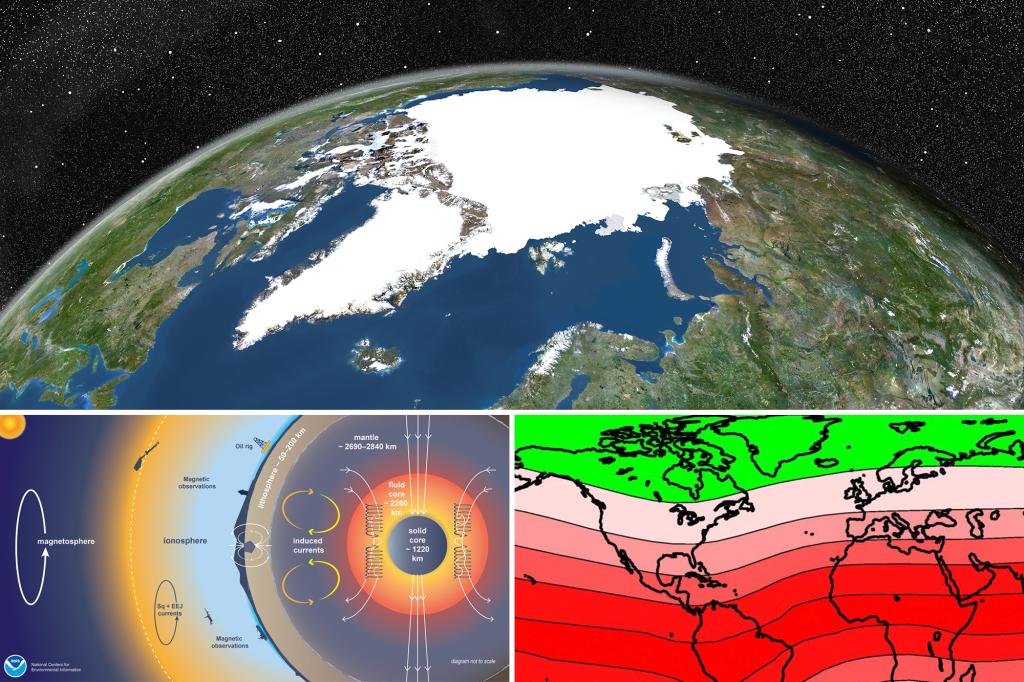Summarize this content to 2000 words in 6 paragraphs
The magnetic North Pole is on a journey toward Russia in a way that has not been seen before.
The British Geological Survey (BGS) works with the U.S. National Oceanic and Atmospheric Administration to produce the World Magnetic Model, which predicts where the magnetic pole should be at any one time.
For centuries, scientists have tracked the pole — updating the model every five years — as it moved closer to the coast of northern Canada; then in the 1990s, it drifted into the Arctic Ocean before picking up the pace toward Siberia in Russia, according to The UK Times.
In Earth’s northern hemisphere, compass needles point toward the magnetic North Pole, and the location changes depending on the shifting contours of the Earth’s magnetic field.
The magnetic pole is distinguishable from the geographic North Pole, also referred to as true north, which is fixated at the spot where all lines of longitude converge.
Over the past five years, the magnetic pole has slowed down, moving at 22 miles a year — a reduction in speed not previously recorded.
In comparison, from 1600 to 1990, it is estimated that it moved at about six miles a year, while in the 2000s it sped up to about 34 miles a year.
Researchers at England’s University of Leeds, led by professor Phil Livermore, proposed that the North Pole’s “odd” behavior may be in a tug-of-war battle between two magnetic forces, one under Canada and one under Serbia.
Livermore noted that the Canadian magnetic force appears to have elongated and split into two, which could ultimately slightly increase the power of the Serbian magnetic force, explaining the movement toward Russia.
The shift of the pole can be chalked up to unpredictable changes in the swirling of molten iron making up most of the Earth’s outer core, the scientists concluded.
“It’s like a giant cup of tea,” William Brown, the global geomagnetic field modeler at the BGS, told The Times of the outer core. “It’s a hot liquid with the viscosity of water.”
Earth’s magnetic field is formed by the movement of the liquid metal, which is generated by the heat that escapes from the core. How the molten iron churns affects both the field and position of the magnetic North Pole.
Using a network of ground stations and satellites, the BGS can monitor data that gives a sense of how the core is behaving, though completely predicting how it does so is impossible.


